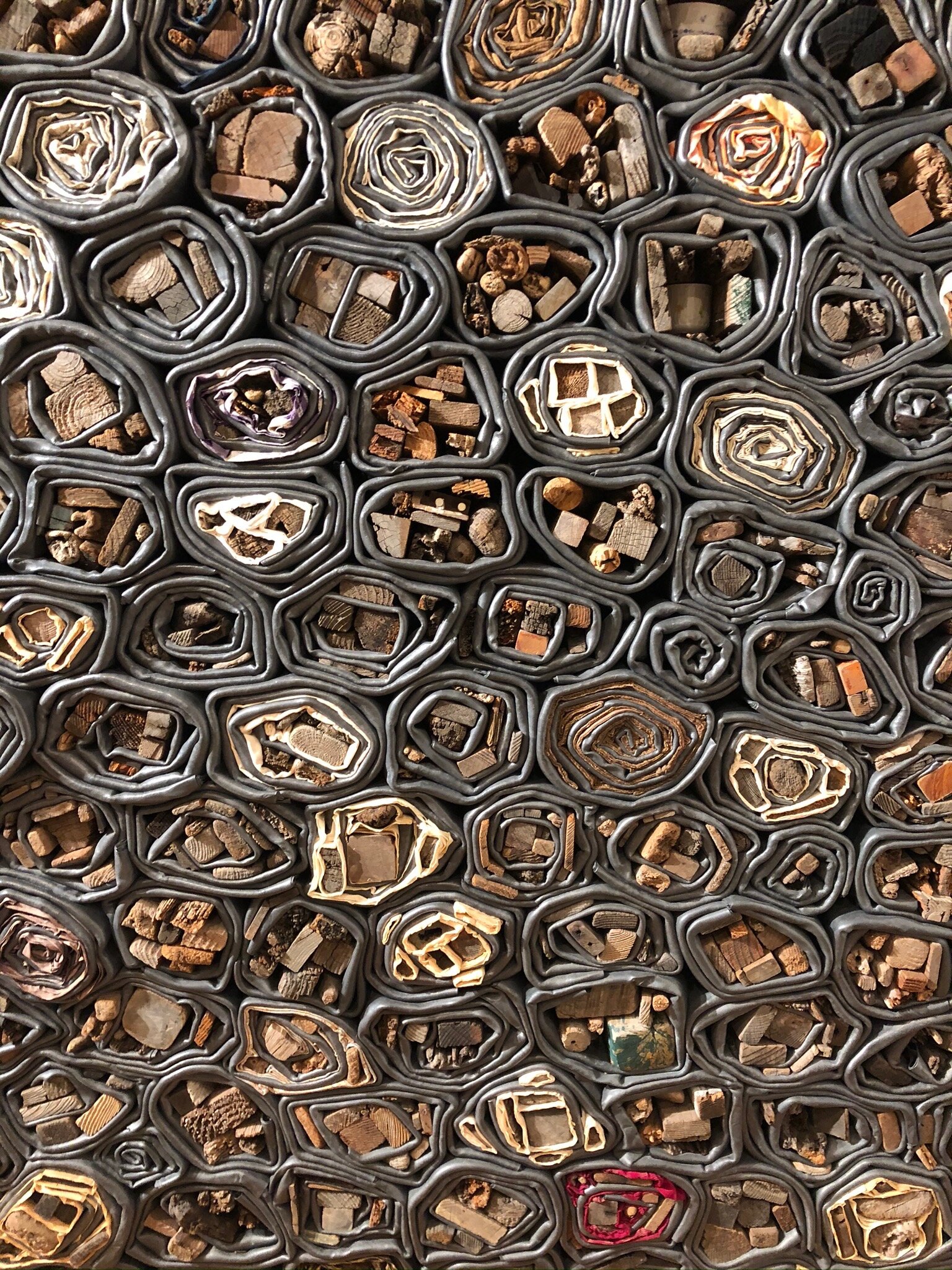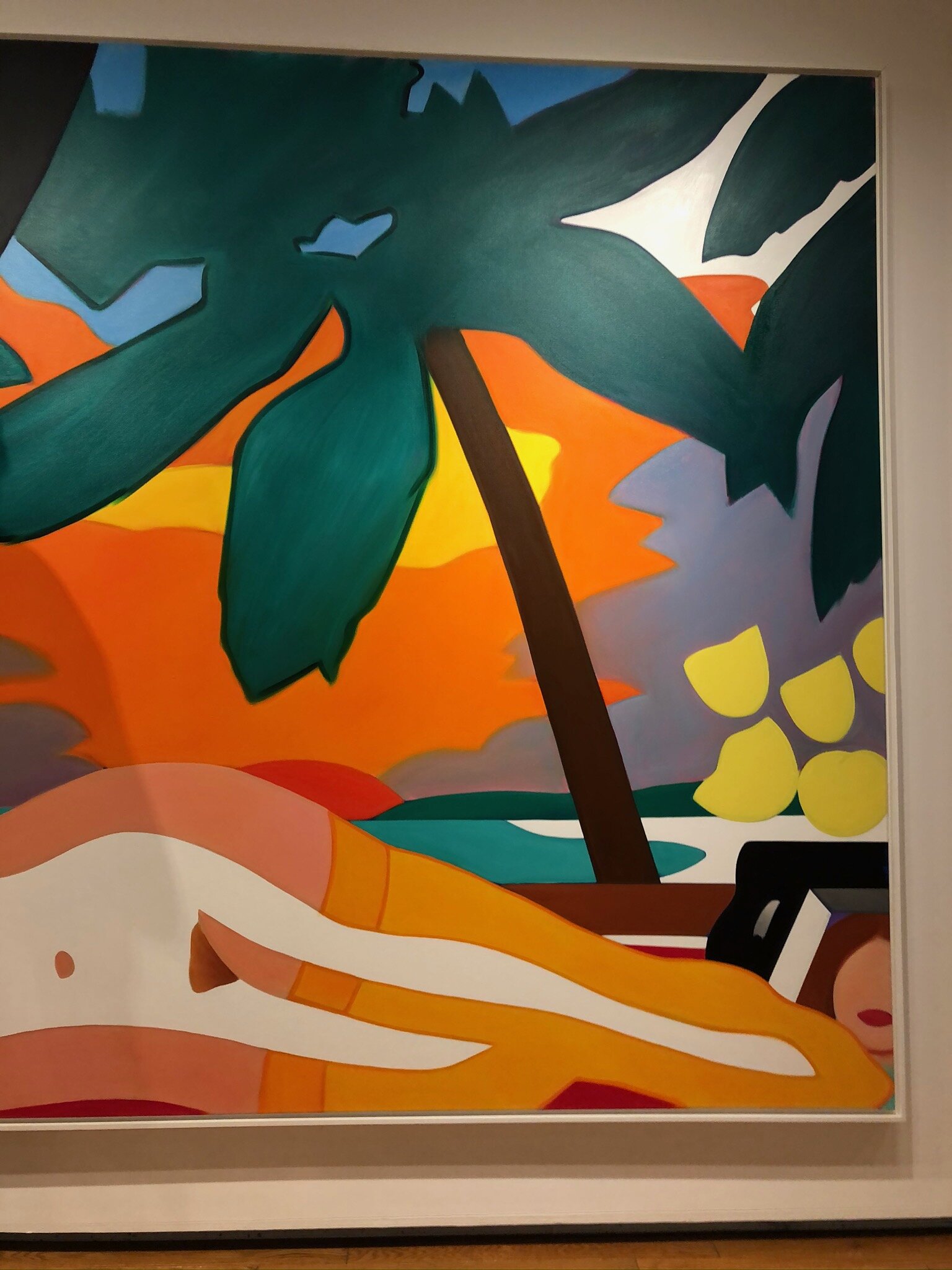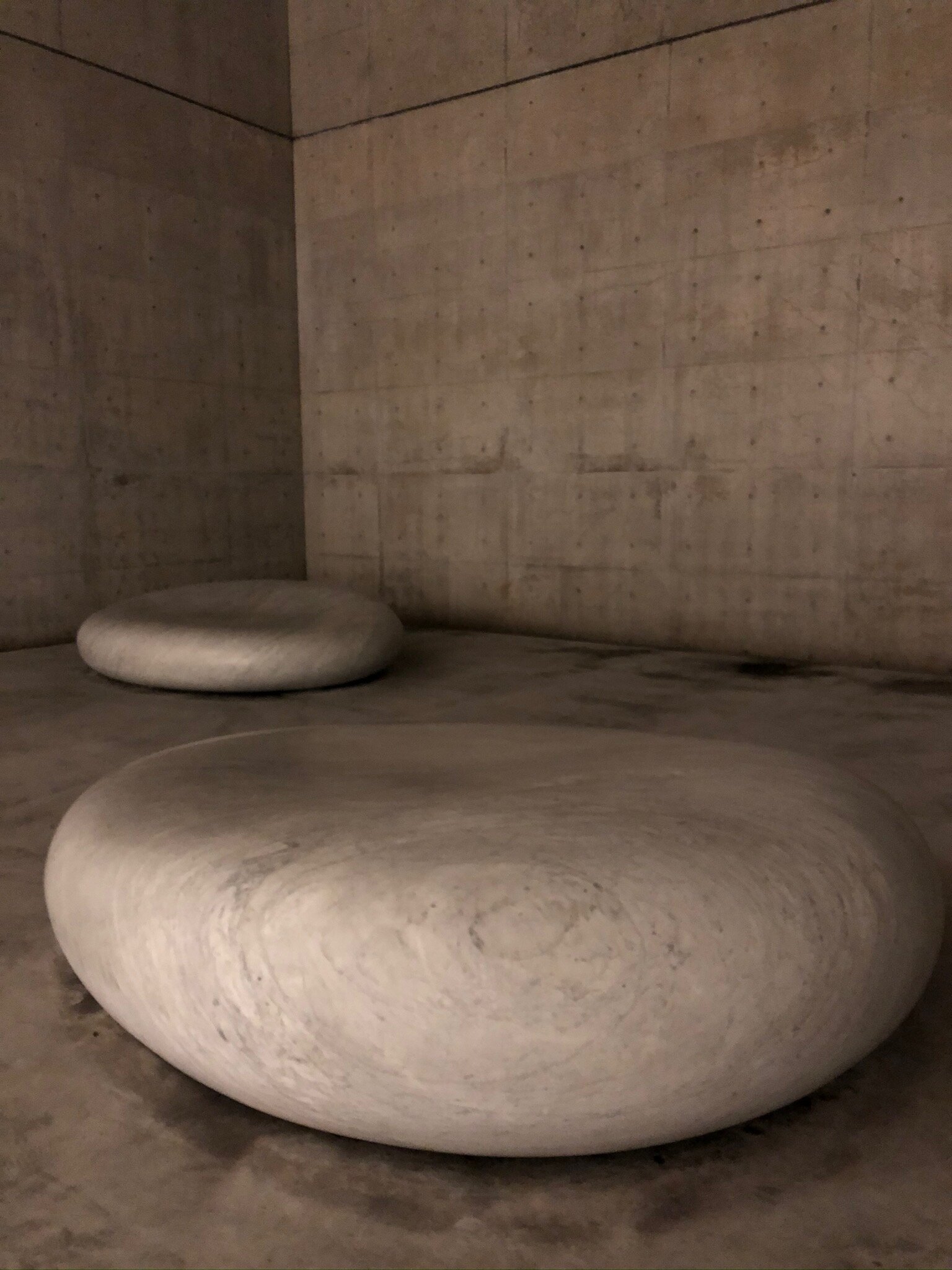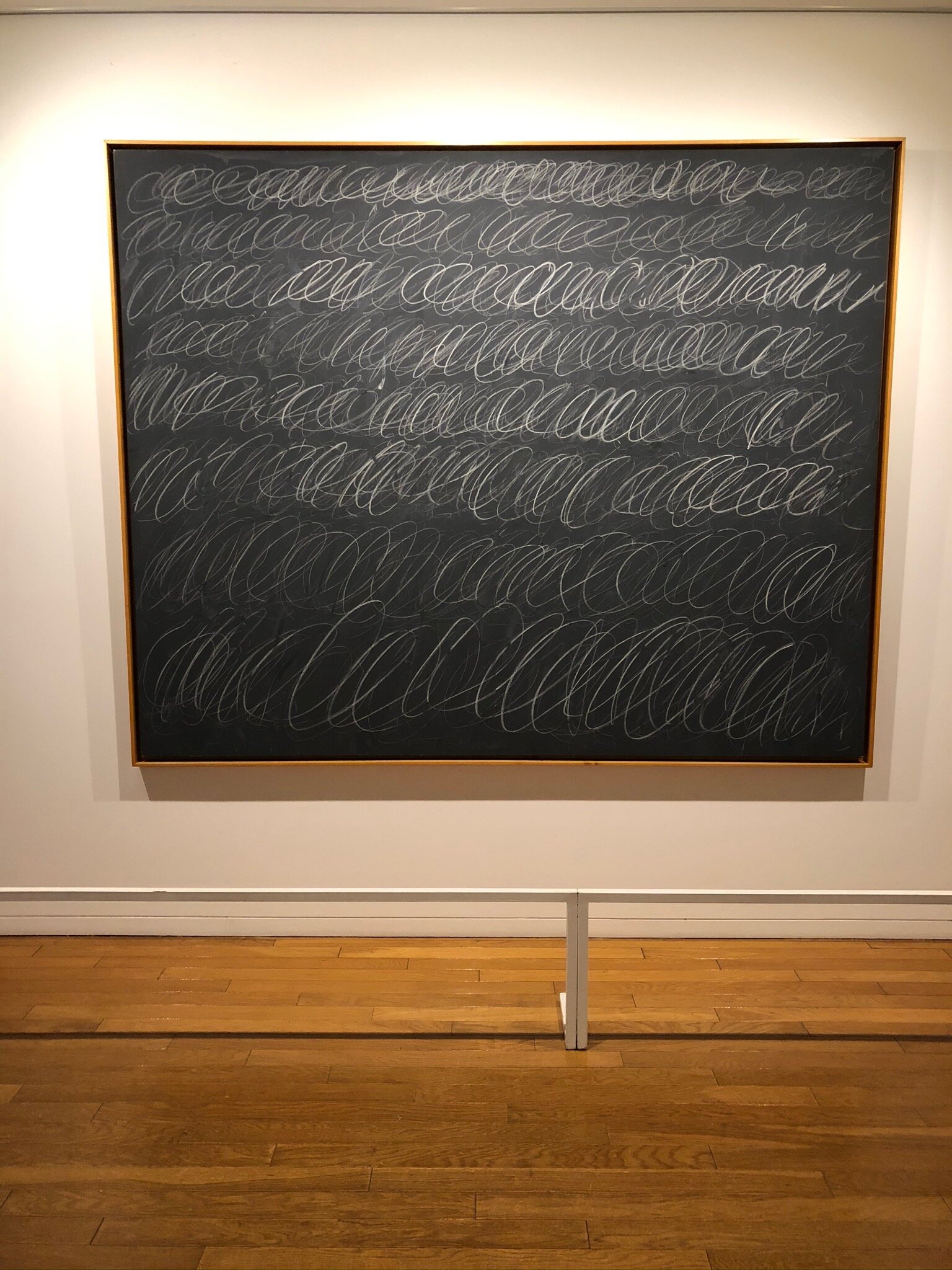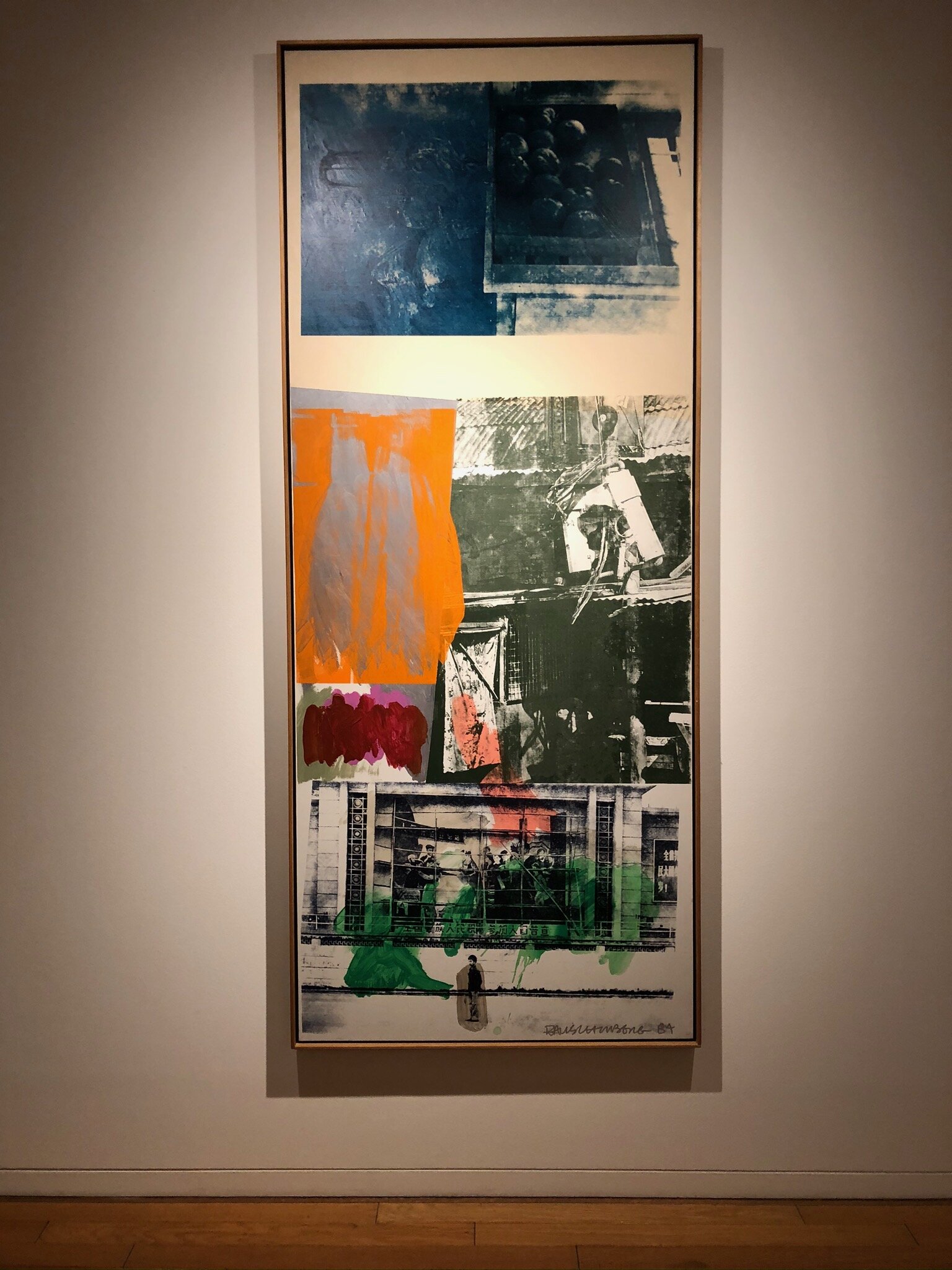NAOSHIMA
One of our absolute favorite places in the world is Japan. Glenn has been several times and, before this trip, I had only been once - on what I call “Japan 101”: Tokyo and Kyoto. For our second journey there, Glenn really wanted to try out spots that are off-the-beaten path, and I really wanted to work into our itinerary this famed island in Japan’s Inland Sea, known for its art and architectural significance, and its Insta-famous Yayoi Kusama pumpkins. Also, as long as I am flying 16 hours, a several-day shopping excursion to Tokyo is a requisite since EVERYTHING fits me! If you know, you know!
The famous Kusama pumpkin on the shores of Naosihima (above)
SUGGESTED ITINERARY: I’m not gonna lie - getting to Naoshima is a hike, and it takes commitment. Naoshima is a small island in the middle of Japan, in between the major islands of Honshu and Shikoku. Start with the high-speed Shinkansen from Tokyo Station to Okayama. From there, you can either take a taxi directly to Uno Port, or transfer at Okayama to the local train which takes you to Uno Port. The walk from the local train to the port is very easy and under three minutes. Jump on the ferry (no advance ticket purchase needed, but do check the schedule in advance) to Naoshima, and have the hotel (there is a Benesse House bus) come fetch you at the port. We took a 10:10 am, train from Tokyo, a 2:25 pm ferry, and arrived in Naoshima around 2:45.
As a side note, this journey was far easier than our departure. Our next stop was Yakushima Island…that trip entailed a bus to the Naoshima port, a ferry to Uno Port, a local train to Okayama, a Shinkansen to Fukuoka, an airport train to Fukuoka Airport, a flight to Yakushima, and a taxi to the hotel. Needless to say…go from Tokyo (or another major city like Osaka or Kyoto).
STAY: We decided to stay at the Benesse House, the only hotel on the island. Given the limited occupancy, snagging a room requires booking six months—to the day—in advance. That means logging on at midnight, Japan time…which thankfully is midday in New York. You can only book one day at a time, so if you plan on spending two nights, you have to login at 10 or 11am (NY time) two days in a row and try to snag the same room, since there are four different structures with different room types to choose from. I made a spreadsheet and did a compare-and-contrast of the rooms. We ended up going for the “Museum” building because we thought it would be fun to stay in the museum and be able to roam the galleries after hours. Each building has its own amazing features - one is right on the sea, and other is at the top of the hill. We also opted for meals at their restaurants—and we were glad that we did, since after a long day of gallery/museum hopping we just wanted to crash at our hotel. All the meals were superb and perfectly fitting of this Japanese cultural icon.
Upon returning to Tokyo for our shopping spree, we opted for the modern take on the traditional Japanese ryokan, at Hoshinoya Tokyo, which is a fun place to stay when on vacation in a city (as opposed to a work trip). You really get the feel of an age-old Japanese inn but with all of the amenities of a modern city hotel. Leave your shoes at the door, and then marvel at the tatami-mat floors of your room, overlooking the bright lights of Tokyo. Each floor has a lounge stocked with Japanese snacks and butler service. While the restaurant only serves dinner, a casual rice breakfast is served upon request. The main draw is their rooftop onsen which will make you want to skip dinner or rush back for a late night dip! Remember to cover your tattoos…and then bear it all!
ACTIVITIES:
Naoshima Day 1: When you arrive via ferry there is a Benesse House bus that will take you to the hotel, where you should immediately work with reception to purchase tickets for the following day to The Art House Project, one of the highlights of the island. It encompasses seven old village houses scattered around the island, where artists have turned the structures themselves into art installations. Upon check-in, you should purchase the pass for all of the art houses, but be sure to reserve the one bookable Art House Project installation. We booked at around 2 pm.
When you make your hotel reservation, I recommend also reserving your entry time for the Chichu Art Museum for Day 2. This and the reserved Art House Project reservations are the only time restrictions you’ll have for Day 2. But it’s Japan…so don’t plan on batting your eyelashes to just “sneak in” to an exhibit. If your ticket says 12:15, you’ll still be in the queue at 12:14.
After getting settled, take a tour of the grounds of Benessse House to see the amazing works and outdoor sculptures on the property, from artists like Yves Klein, Hiroshi Sugimoto, Cy Twombly, Andy Warhol, and Jean-Michel Basquiat (above). Our self-guided walking tour at sunset provided amazing light on the outdoor sculptures. We then had the dinner at the Museum restaurant which we had reserved when we made the room reservations. After a long day of travel and touring the grounds it was nice not to have to leave the hotel grounds.
Naoshima Day 2: Wake up the next day and have breakfast at the Terrace restaurant at the hotel. After breakfast, take the scenic walk to the Lee Ufan Museum, stopping to see the various outdoor sculptures on the way (the hotel will give you a map). Lee Ufan was a Japan-based Korean minimalist painter and sculptor, whose works are a real standout of the island. After Lee Ufan (below left), don’t miss the garbage can sculpture (below right) on the way to the Chichu Museum (for which you made the advance purchase of timed tickets). Make sure to time your day accordingly!
We had a 10:45 am reservation at Chichu. We arrived early after the previous stops we made. Unfortunately you can’t change your time, and you can’t get anywhere without the buses, so make sure you time your stops well. Another option is rent a bike to explore the island — but note that bike rentals are only available at the port. We took advantage of the Bennesse private bus and the local bus (you need change in yen—it’s like 100 yen per ride). Make sure to look at the bus schedules and time your visit so you’re not waiting afterwards for a bus. Chichu is a sight to behold. The structure (below) was built below ground with interconnecting galleries featuring a room full works by Monet and Turrell.
You can then eat lunch either at the simple cafe at Chichu, which has a small lunch menu, or take the bus to the art house project stop in Honmura. We had lunch at an adorable little cafe in Honmura called The Apron Cafe before setting off for the Art House Project tour and wandering around the quaint and quintessential Japanese town.
Back to the hotel for dinner. There are two set times to choose from, and I felt our dinners were booked too late at 8pm (and they won’t let you change the time given limited availability), so would recommend opting for the earlier slot. Once it gets dark there isn’t much to do; we were there in October so we were waiting around from 6-8 to eat. It may stay lighter later in the summer months.
Naoshima Day 3: We left very early in the morning because we were going to Yakushima. Two full days was perfect for Naoshima. However, there are several neighboring art islands, and if you have more time, you can ferry over to these other islands for a day. There was definitely more to do, although we were very satiated with our two days. No less.
CLICK THE ABOVE IMAGES TO ENLARE!
Only 3000 people live on the island.
PACKING INSPIRATION: The Japanese have impeccable style but they also LOVE American style. Think skater meets Americana style.
WHAT TO PACK: This is an active trip and you want to be comfortable. It’s also an art island and, as you might expect, attracts a fashion forward crowd. It is possible to visit the island most of the year, so there are varying forecasts depending on when you visit. We went in October and it was very pleasant. It can be warm during the day and chilly at night so long sleeve shirts or light weight jackets are perfect. Comfortable walking shoes are key. For the perfect day, throw on your Chucks or Nike Air Max 90s, with a wider leg jean or chino, and a bomber or chore jacket, and top it off with a beanie…and you’re ready for art exploration…Japanese Style!
SHOES: For this trip you’ll need (scroll down for a visual shoe guide):
A comfortable walking shoe (Chucks or Nike Air Max 90s) to explore art exhibits and be on your feet most of the day,.
A stylish shoe/boot for evening dinners.
A shoe that is appropriate in case it rains.
SHOP SAM’S LOOKS






